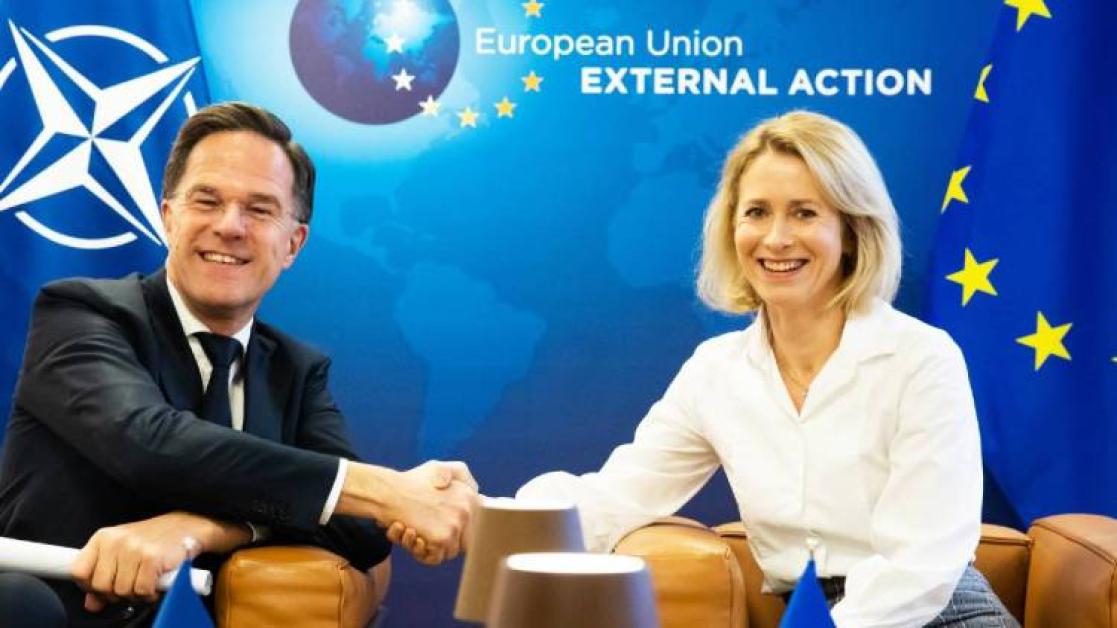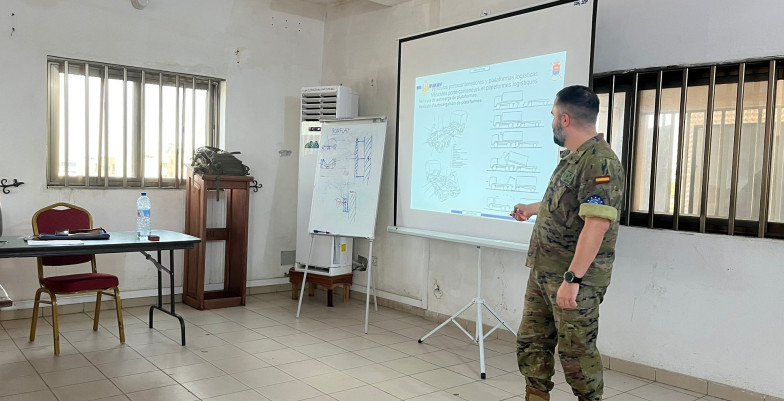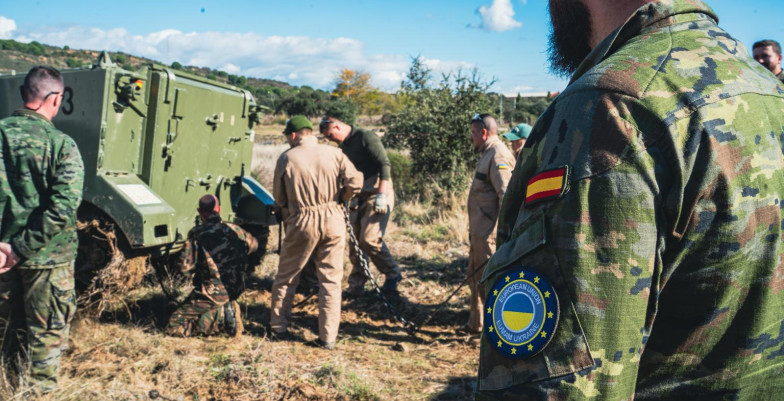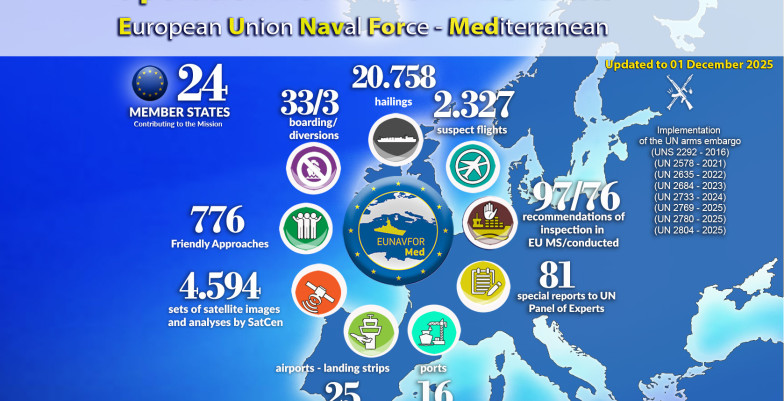Bolstering European Defence: Readiness 2030
Upholding peace in Europe lies at the heart of the European Union. Today, for Member States and the EU, this means taking greater responsibility for our own defence. This section explains why and how we build a stronger defence together.
Readiness 2030 objectives
To tackle immediate threats and build up Europe’s longer-term defence, the EU and Member States are:
-
Developing more military capabilities: While the EU Member States are responsible for defence, developing the capabilities Europe needs today to defend itself cannot be done alone. The EU can help Member States replenish, and strengthen national armed forces – for instance by encouraging the collective procurement of defence equipment.
-
Making European defence industry stronger, more competitive, and more innovative: through more investment in defence, working together, and simplified legislation, we will support ramping up production, strengthen our industry and develop a single market for defence products and services.
-
Stepping up support to Ukraine: Investing in Ukraine’s security is an investment in Europe’s security. Increasing military assistance to Ukraine urgently – but also associating its industry more closely to European defence initiatives, is essential for the defence of Europe.
A strong EU-NATO cooperation remains central to this work.
How do we do it?
The White Paper for European Defence – Readiness 2030 sets out a vision to deliver more capable European defence by 2030.
To achieve this, we support EU Member States by working on:
- Stronger military capabilities
- A European defence industry fit for purpose
- Closer partnerships
- More support and joint defence projects with Ukraine
By enhancing European defence readiness, the EU and Member States will be better equipped to protect peace and security in Europe, and preserve the international rules-based order.
Closing critical capability gaps
To deter against threats and defend Europe, we need to invest in capabilities in critical areas.
Nine priority areas have been identified by the EU and Member States:
- Air and missile defence
- Artillery systems
- Ammunition and missiles
- Drones and anti-drones systems
- Military mobility
- AI, quantum, cyber and electronic warfare and
- Strategic enablers and critical infrastructure protection including strategic airlift, air-to-air refuelling, maritime domain awareness, and protection of space assets.
- Ground combat
- Maritime capabilities
While EU Member States are in the driving seat, the EU can help pool resources to better address threats together and support through collaborative and flagship European defence projects.
To be less fragmented, reach economies of scale, and ensure predictability for the defence industry, Member States can aggregate demand and place contracts together. This will create jobs, foster economic growth, and provide welcome support for the European defence industry.
By attracting new companies and supporting investments in disruptive innovations – such as Artificial Intelligence and quantum technology – and by learning from the battlefield experiences of the Ukrainian defence industry, Europe will be able to better deter adversaries.
Working together, we are stronger.
Boosting defence spending and investments
Building a strong defence industrial base to ramp up production and accelerate innovation is essential for Europe to be ready. This requires stepping up investments for the security and defence of Europe.
For too long, we have under-invested in defence. To preserve our deterrence and ability to defend ourselves and be a reliable and strong security actor, we need a surge in defence investment. Building on the White Paper for European Defence – ReArm Europe Plan – Readiness 2030 proposals, several options were put forward to support a massive increase in defence investments and defence spending. This ambitious defence package could unlock up to € 800 billion over the coming years.
How? By providing financial levers to EU Member States to drive an investment surge in defence capabilities:
- Measures to unleash the use of additional public funding at national level: the possibility to activate the national escape clause of the Stability and Growth Pact will provide the Member States with additional budgetary space to increase their defence spending, within the EU fiscal rules. This means they can spend up to 1.5% of GDP in additional defence expenditures. This flexibility will allow to substantially bolster the defence and security capabilities of the EU.
- Security Action for Europe (SAFE) regulation: up to €150 billion in the form of loans for jointly procuring defence equipment to ramp up investment in Europe's defence capabilities. These funds will be disbursed to interested Member States upon demand, on the basis of national plans.
- Accelerating the Savings and Investments Union: The ReArm Europe Plan/Readiness 2030 also relies on the European Investment Bank Group to widen the scope of its lending to defence and security projects, while safeguarding its financing capacity. The Savings and Investments Union Strategy, adopted by the European Commission in March 2025, will make it easier to mobilise private savings into more efficient capital markets and channel investments into critical sectors of the economy, such as defence, for those who wish to invest in them.
The EU is also putting efforts to simplify legislation and streamline EU defence public procurement rules, and to deepen the EU-wide market for defence equipment. In June 2025, The Commission proposed Defence Readiness Omnibus to speed up defence investments in the EU.
Progress to date
October 2025
Upcoming discussion of the European leaders on defence.
Ongoing
The European External Action Service, the European Defence Agency and Commission work with EU Member States on the implementation of our objectives.
June 2025
European leaders agree to substantially increase expenditure on Europe’s defence and security.
At NATO summit, 23 EU Member States also NATO allies agree to raise Defence spending target to 5% of GDP.
The Commission proposes Defence Readiness Omnibus to speed up defence investments in the EU.
March 2025
HR/VP Kallas and the European Commission unveil the white paper for European defence and the ReArm Europe plan – Readiness 2030.
European leaders call for an acceleration of the work on all strands to decisively ramp up Europe’s defence readiness within the next five years.
Working closely with Ukraine

European Union
EU’s support to Ukraine’s defence industry is essential for the country to defend itself against Russia’s war of aggression and to be in a position of strength to reach a just and lasting peace, which is in the EU’s security interest.
To do this, we are
- responding to the immediate needs in Ukraine, by ramping up our defence production capacity.
- investing directly into Ukrainian defence industry and supporting Ukrainian defence innovation.
- associating Ukraine to European defence initiatives and joint projects. This will contribute to Ukraine's defence industry becoming further integrated into the European defence technological and industrial base.
This will allow us to learn from Ukraine’s experience in the battlefield, outstanding innovation capacities and ability to quickly ramp up defence production.
- Follow the link to learn more about the EU's military and defence support to Ukraine.
Deepening our partnerships around the world

European Union
The power of partnerships is key to reaching defence readiness – in the face of threats that know no borders and shared challenges to global security.
Tailored mutually beneficial partnerships with bilateral and multilateral partners across the globe will help to address a wide range of security challenges, including in the field of capability development and innovation.
The North Atlantic Treaty Organisation (NATO) remains the cornerstone of collective defence in Europe. A stronger EU Defence will benefit the transatlantic security and help EU Member States reach their NATO capability targets. In June 2025, the 23 EU Member States that are also members of NATO agreed to raise defence spending targets to 5% of the GDP.
- Read more about the EU's defence-related partnerships.








